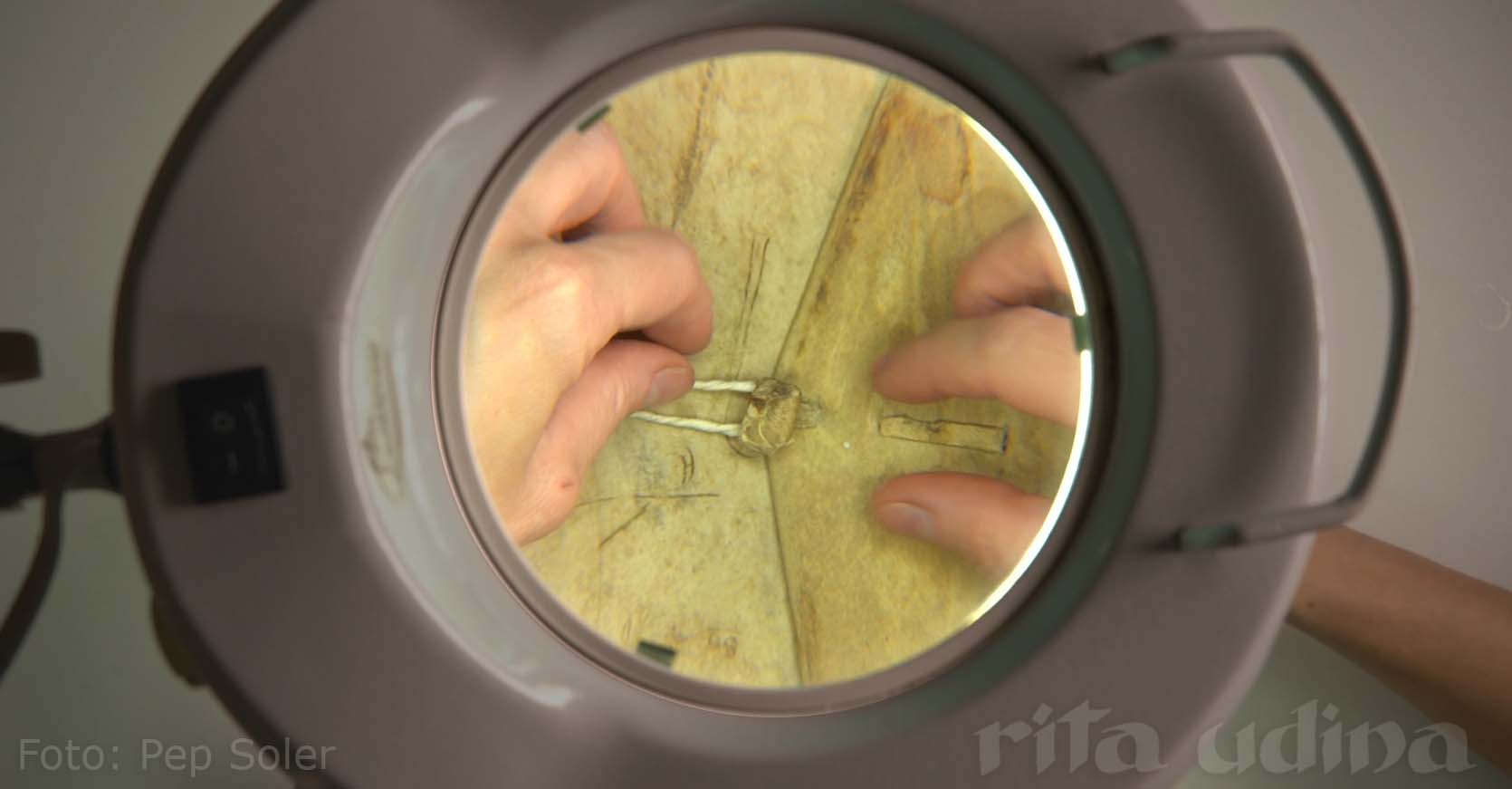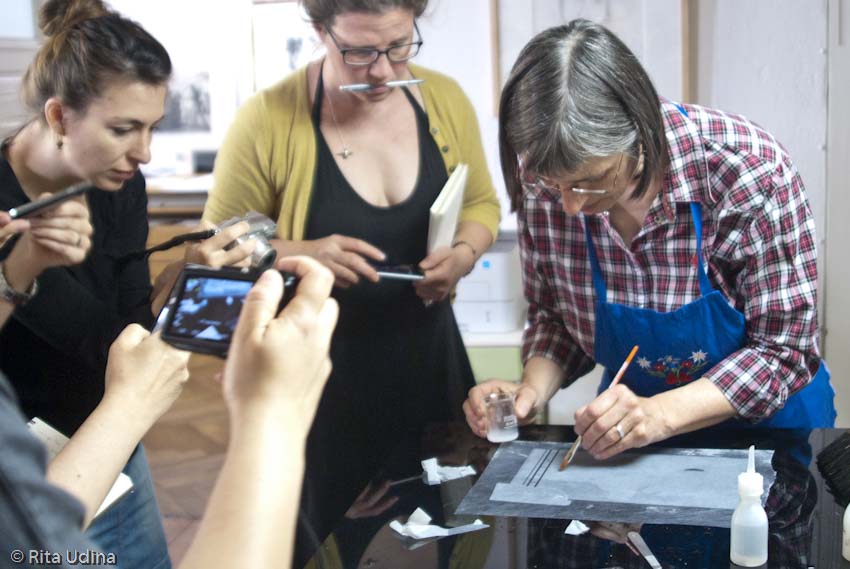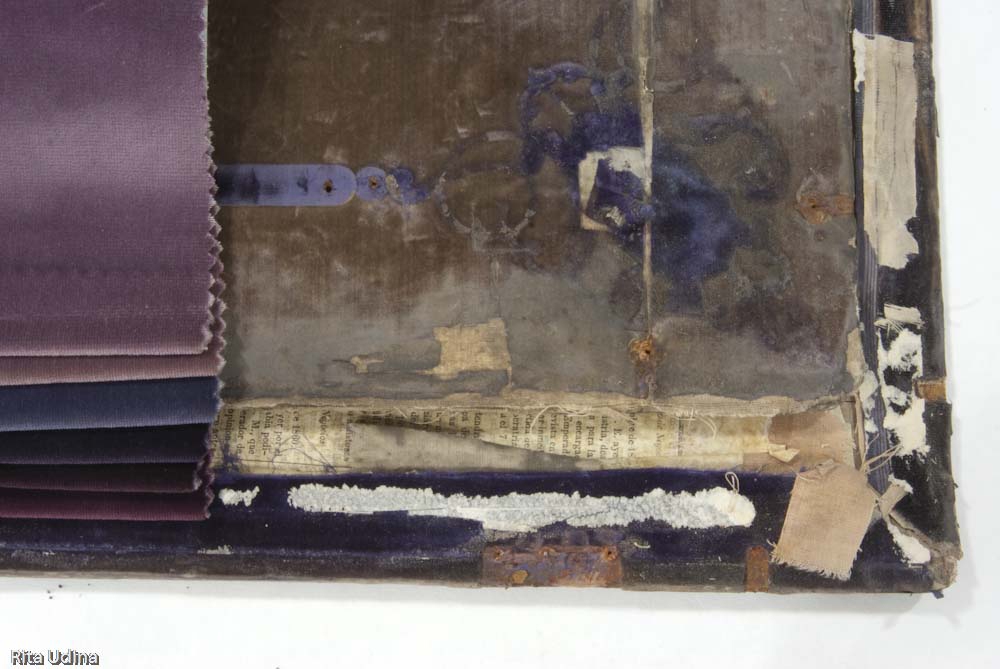Tracing paper conservation, berliner style

Danila Narcisi, Anna Lagerqvist, Ségolène Walle (left to right) and Hildegard Homburger (bottom) at the course, at her studio.
I never enjoy anything as much as visiting other paper restoration studios, especially if they are private. Private studios usually bear the imprint of a personal vocation, of a step by step evolution, and this confers in them a personality which is barely present in institutional conservation studios, certainly to such an extent. This time, besides the visit, there is a journey, a restoration course and the encounter with friend restorers… What else could I ask for?
I am in Berlin, at Hildegard Homburger’s two day course on tracing paper conservation. This paper is a real challenge for restorers because it expands and shrinks in apparently unpredictable ways and its transparency greatly highlights any folds and tears. But tracing paper has no secrets for Hildegard: she understands it from its manufacturing process to the peculiarities of its restoration. She has been a world expert on the subject for years, and to see her working in situ is a true privilege.
First she grounds us with theory, and then leaves us astonished during the practical session. Timing and organization honour all things about German efficiency, and yet her relaxed and friendly manners brought us the best of experiences sharing thoughts and tips.
And back to my fondness, the studio: It is a second floor flat in a building of the 40’s. The ceilings are high, with beautiful sgraffito decoration. The door handles, the tiles… the most exquisite German design peeps out discreetly from every spot. And what can I say about her collection of irons? Hildegard has a collection of ancient irons that I envy so much! And the detail of the “dark” table? Instead of the classic light-table, black glass allows you to clearly see every tear and gap in the rebel tracing papers. I watch the space distribution, the tools, the jars… Is there a better way to nose around than becoming a Berliner conservator for two days?
Dedicated to:
Post dedicated to my beloved friend Louise, with whom I share laughs, thoughts, journeys and our profession… and who corrected the English version of this post! 🙂
Related blog posts:
Filter post by:
Tracing paper conservation, berliner style

Danila Narcisi, Anna Lagerqvist, Ségolène Walle (left to right) and Hildegard Homburger (bottom) at the course, at her studio.
I never enjoy anything as much as visiting other paper restoration studios, especially if they are private. Private studios usually bear the imprint of a personal vocation, of a step by step evolution, and this confers in them a personality which is barely present in institutional conservation studios, certainly to such an extent. This time, besides the visit, there is a journey, a restoration course and the encounter with friend restorers… What else could I ask for?
I am in Berlin, at Hildegard Homburger’s two day course on tracing paper conservation. This paper is a real challenge for restorers because it expands and shrinks in apparently unpredictable ways and its transparency greatly highlights any folds and tears. But tracing paper has no secrets for Hildegard: she understands it from its manufacturing process to the peculiarities of its restoration. She has been a world expert on the subject for years, and to see her working in situ is a true privilege.
First she grounds us with theory, and then leaves us astonished during the practical session. Timing and organization honour all things about German efficiency, and yet her relaxed and friendly manners brought us the best of experiences sharing thoughts and tips.
And back to my fondness, the studio: It is a second floor flat in a building of the 40’s. The ceilings are high, with beautiful sgraffito decoration. The door handles, the tiles… the most exquisite German design peeps out discreetly from every spot. And what can I say about her collection of irons? Hildegard has a collection of ancient irons that I envy so much! And the detail of the “dark” table? Instead of the classic light-table, black glass allows you to clearly see every tear and gap in the rebel tracing papers. I watch the space distribution, the tools, the jars… Is there a better way to nose around than becoming a Berliner conservator for two days?
Dedicated to:
Post dedicated to my beloved friend Louise, with whom I share laughs, thoughts, journeys and our profession… and who corrected the English version of this post! 🙂
















